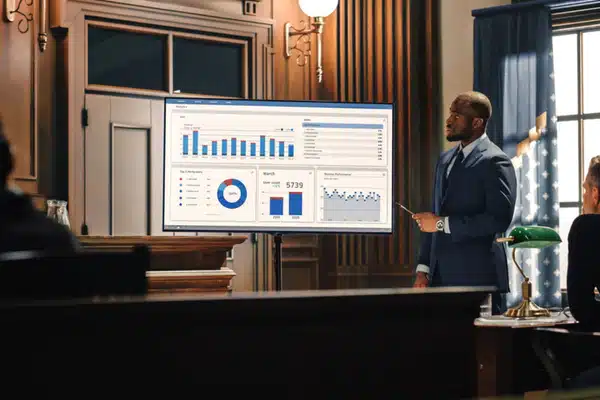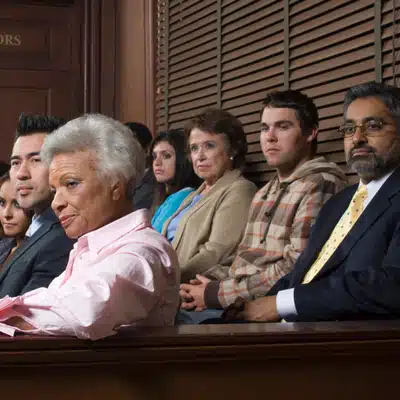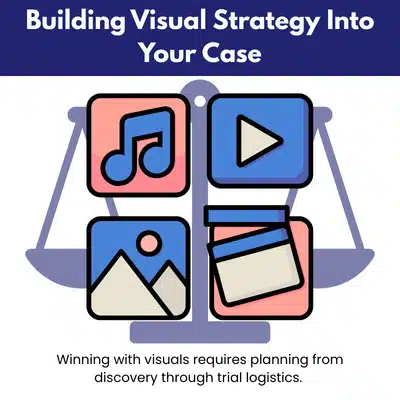
Modern juries face mountains of complex evidence. They hear technical terms, review financial data, and analyze expert witness data that can confuse even smart people. This is where courtroom visuals like visualization, accident reconstructions, and clear courtroom graphics change everything.
Research shows people remember 80% of what they see but only 10% of what they hear. For lawyers, this means one thing: trial graphics, advocacy digital media, and smart use of trial logistics improve comprehension and make visualization a key part of powerful courtroom advocacy.

Human brains process images in just 13 milliseconds. That’s faster than a blink. When jurors see a clear chart or animation, they understand instantly what might take hours to explain with testimony alone.
The American Bar Association found that juries retain 65% more information when lawyers combine visual aids with spoken words. This boost in comprehension happens because graphics engage multiple learning styles at once.
Today’s jurors grew up with TV, social media, and interactive content. They expect information in visual formats. Trial consultants note that crime shows have taught people to expect drama to unfold on screen. Smart lawyers meet these expectations.
Well-designed courtroom graphics also solve the attention problem. A striking illustration can refocus a tired juror during long afternoon sessions. This keeps crucial evidence from getting lost to fatigue.
Different graphics serve different purposes in your case strategy. Here’s what works best:

Charts and Graphs: Raw numbers confuse juries. A simple bar chart or pie chart makes expert witness data clear and memorable. Financial fraud cases especially benefit from visualization that shows patterns over time.
Timeline Graphics: Complex cases need clear chronology. Timeline graphics plot key events in order, helping juries follow the story. Instead of juggling dates in their heads, jurors see the whole sequence at once. This improves jury comprehension of how evidence pieces fit together.
Accident Reconstructions: Car crashes and workplace injuries come alive through computer graphics and 3d modeling. These courtroom animations show exactly how events unfolded. Juries can see driver visibility angles or impact physics that words can’t capture. Good evidence animation brings disputed events to life with stunning clarity.
Medical Illustration: Injury cases need visual proof of harm. Anatomical models and before-and-after graphics communicate pain better than medical jargon ever could. A spine illustration with highlighted damage areas shows severity instantly.
Document Exhibits: Even contracts can go visual. Key passages get highlighted on screen with callouts that draw attention to crucial terms. Photos, videos, and site diagrams turn abstract concepts into concrete evidence.
Each visual tool serves your trial strategy. Done right, courtroom graphics condense complexity into clear pictures that juries understand and remember during deliberation.
Great graphics do more than explain facts. They influence emotions and build credibility in ways that pure logic cannot match.
People make decisions with their hearts, then justify with their heads. A powerful image of injuries or crime scene details creates empathy that shapes how juries see victims and wrongdoers. This emotional impact directly affects verdicts.
Visual advocacy also reinforces your story. Trials are battles of competing narratives. Professional courtroom graphics signal that your team prepared thoroughly and takes the case seriously. Juries trust lawyers who present polished evidence more than those who rely on words alone.
Poor visuals damage credibility fast. If juries struggle to understand your point because you didn’t visualize it well, they question your effectiveness and evidence strength. Clear graphics show preparation, attention to detail, and commitment to good communication.
Expert witnesses gain credibility through visual support too. Many jurors distrust complex scientific testimony. But when experts use charts, models, or animations to explain their analysis, it seems more reliable. Visual proof helps juries follow the logic and trust the conclusions.

Winning with visuals requires planning from discovery through trial logistics. You can’t just add graphics at the last minute and expect maximum impact.
Start early by identifying complex concepts that might confuse juries. Which expert testimony needs visual support? What timeline of events must be crystal clear? Build your case strategy around these visual opportunities.
Follow smart design principles when creating graphics. Keep things simple and accurate. Avoid flashy elements that distract from facts. Use readable fonts, high-contrast colors, and logical layouts. Every element should have a clear purpose.
Most importantly, ensure your visuals reflect real evidence fairly. Courts provide jury instructions emphasizing that exhibits are only as valid as the underlying facts. Misleading graphics get thrown out and destroy your credibility.
Technology support makes or breaks visual presentation. Partner with professionals who handle multimedia trial support seamlessly. They manage equipment, software, and coordination so you focus on advocacy instead of technical problems. This litigation support experience prevents embarrassing glitches that undermine your polished image.
Smart firms invest in advocacy digital media as a core part of their practice. They hire graphic designers, forensic animators, and video production experts. This creates a complete visual advocacy toolkit for different learning styles on juries.
New technology keeps expanding possibilities. Some trial teams now use augmented reality and virtual reality for 3d crime scene reconstructions. While still emerging, these tools represent the future of courtroom support solutions.

Effective courtroom visuals transform how juries see evidence and make decisions. They boost jury understanding, improve retention, and build the credibility that wins cases.
But success requires more than good graphics. You need smart trial strategy that integrates visuals from preparation through closing arguments. You need trial support professionals who handle technology smoothly. And you need designs that clarify rather than confuse.
The payoff is huge. Research proves that visual presentations are more persuasive than words alone. In our fast-paced world where attention is precious, infographics and timeline graphics can tip the scales toward justice.
Don’t let your next case suffer from poor communication when visual solutions exist. Partner with experienced trial graphics professionals who understand both technology and advocacy. Your clients deserve every advantage, and compelling visuals might be the difference between winning and losing.
Ready to transform your trial presentations? Contact litigation support experts who can help you harness the full power of visual advocacy. Your juries will understand better, remember longer, and decide with greater confidence when you give them the clarity they need.
Timelines, charts/graphs, annotated documents, accident reconstructions, and medical illustrations turn complex evidence into simple narratives. Choose the format that best serves your case theory and ensure each visual delivers one clear takeaway.
They’re typically allowed as pedagogical aids if they fairly and accurately reflect admitted evidence and a sponsoring witness lays the foundation. Avoid exaggeration, keep proportions faithful, and cite sources to minimize “misleading” and Rule 403 challenges.
Begin in discovery so timelines, animations, and charts can be vetted with experts and tied tightly to exhibits. Use professional trial graphics designers and a hot-seat operator to ensure technical reliability and seamless in-court execution.
Use plain labels, high contrast, consistent scales, and limit each slide to one idea to reduce cognitive load. Stress-test accuracy with subject-matter experts and rehearse on the actual courtroom display setup to avoid legibility surprises.
